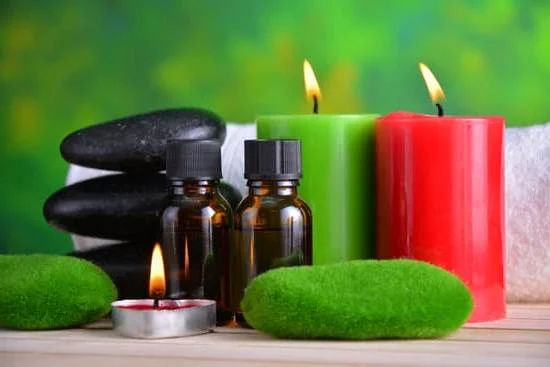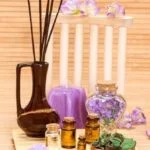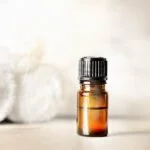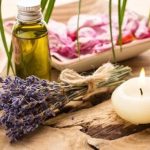Healing oils play a significant role in aromatherapy, offering a natural way to promote health and wellness. With over 500 formulas for aromatherapy, these essential oils have been utilized for centuries for their therapeutic benefits. From aiding in relaxation to relieving stress and boosting overall well-being, healing oils have become increasingly popular in modern holistic practices.
Aromatherapy, the use of essential oils derived from plants for healing purposes, has gained widespread attention for its potential to address various health concerns. These healing oils are known for their aromatic and medicinal properties, which can be harnessed through different methods such as diffusion, topical application, and inhalation. The diverse range of 500 formulas allows for a personalized approach to aromatherapy that caters to individual needs and preferences.
The historical use of healing oils spans across different cultures and civilizations, with evidence of their significance dating back centuries. As we delve into the evolution of aromatherapy and the traditional practices associated with healing oils, it becomes clear that their therapeutic potential has stood the test of time. Through understanding the history of healing oils, we gain insight into the rich cultural heritage surrounding their use and the valuable knowledge passed down through generations.
History of Healing Oils
Throughout history, healing oils have been used in various cultures and civilizations for their therapeutic properties. In ancient Egypt, essential oils were highly regarded for their aromatic and medicinal qualities, often used in religious rituals, embalming practices, and for treating ailments. The Greeks and Romans also valued the healing powers of essential oils, incorporating them into bathing rituals, massages, and as natural remedies for health conditions.
In the Far East, traditional Chinese medicine has utilized healing oils such as lavender, peppermint, and eucalyptus for centuries to restore balance and promote wellness. Similarly, Ayurveda, the traditional medicine system of India, embraces the use of healing oils like sandalwood, frankincense, and ginger to address physical and emotional imbalances.
Over time, aromatherapy has evolved from ancient practices to a modern holistic approach to health and wellness. With advancements in scientific research, the benefits of healing oils for aromatherapy have been validated by studies supporting their effectiveness in improving mood, reducing stress levels, enhancing relaxation, and even alleviating certain health conditions.
As our understanding of the historical use of healing oils continues to expand and evolve with ongoing research and discoveries from around the world, it becomes apparent that aromatherapy is deeply rooted in ancient traditions while also adapting to contemporary lifestyles. The diverse cultural influences on aromatherapy have contributed to an extensive range of 500 formulas for aromatherapy that cater to various health needs and preferences.
Understanding the 500 Formulas
Healing Oils 500 Formulas for Aromatherapy is an extensive resource that delves into the wide array of healing oils and how they can be used for aromatherapy. With 500 different formulas to explore, each with its own unique properties, this book provides a comprehensive guide for anyone interested in harnessing the therapeutic benefits of essential oils.
The 500 formulas included in this book cover a variety of health and wellness needs, from stress relief to immune system support. Each formula is carefully curated to provide specific therapeutic benefits, and many can be combined to create custom blends tailored to individual needs. Whether you are looking to alleviate headaches, improve sleep quality, or enhance mental clarity, there is a healing oil formula suited for your needs.
One of the key aspects of understanding the 500 formulas is recognizing the diverse properties of different essential oils. From calming lavender and chamomile to invigorating peppermint and eucalyptus, each oil has its own unique aroma and healing properties. Understanding how these oils complement one another and can be combined to enhance their therapeutic effects is a fundamental aspect of utilizing aromatherapy for overall well-being.
| Healing Oil | Therapeutic Properties |
|---|---|
| Lavender | Calming, soothing, promotes relaxation |
| Peppermint | Invigorating, cooling, relieves headaches |
| Eucalyptus | Cleansing, decongestant, respiratory support |
Top 10 Healing Oils for Aromatherapy
When it comes to aromatherapy, the use of healing oils plays a crucial role in promoting health and wellness. The top 10 healing oils for aromatherapy are essential components in various formulas and blends that offer a wide range of therapeutic benefits. These essential oils are extracted from plants, flowers, herbs, and fruits, and each one carries its own unique properties that contribute to their healing capabilities.
1. Lavender Oil: Known for its calming and relaxing effects, lavender oil is widely used to reduce stress and anxiety. It also has anti-inflammatory and antimicrobial properties, making it beneficial for skin conditions and minor cuts or burns.
2. Peppermint Oil: With its invigorating minty scent, peppermint oil is popular for alleviating headaches, boosting energy levels, and aiding digestion. It also has cooling properties that can help soothe muscle pain.
3. Tea Tree Oil: Recognized for its powerful antibacterial and antifungal qualities, tea tree oil is often used in skincare products to treat acne, dandruff, and other skin irritations. It can also be diffused to purify the air in a room.
4. Eucalyptus Oil: Widely known for its respiratory benefits, eucalyptus oil is effective in clearing congestion and promoting easier breathing. Its fresh aroma is commonly used during cold and flu season or as a natural insect repellent.
5. Chamomile Oil: Renowned for its soothing properties, chamomile oil is utilized to promote relaxation and improve sleep quality. It can also be used topically to calm irritated skin or as a natural remedy for digestive discomfort.
6. Rosemary Oil: With its stimulating herbal scent, rosemary oil is favored for enhancing mental clarity, concentration, and memory retention. It can also stimulate hair growth when applied to the scalp.
7. Lemon Oil: Known for its refreshing citrus scent, lemon oil is uplifting and energizing. It can help uplift mood while also possessing antibacterial properties that can aid in cleansing surfaces or purifying the air.
8. Frankincense Oil: Referred to as the “king of oils,” frankincense oil has been valued throughout history for its aromatic richness and powerful healing properties. It’s commonly used to promote feelings of tranquility, support healthy cellular function, and rejuvenate the skin.
9. Ylang Ylang Oil: With its sweet floral fragrance, ylang ylang oil is often used to reduce tension and stress while promoting feelings of joy and wellbeing. Its aphrodisiac qualities make it a popular choice for romantic occasions as well.
10. Geranium Oil: Known for balancing emotions and hormones, geranium oil has a rosy scent that helps alleviate anxiety while also improving skin tone when applied topically.
Overall When selecting essential oils for aromatherapy purposes it’s important ensure they are sourced from reputable suppliers using proper extraction methods; this ensures their purity Whether used individually or combined within blends,, these top 10 healing oils offer an array of therapeutic benefits that enhance both physical wellness mental well-being alike.
Aromatherapy Techniques and Methods
Diffusing Healing Oils
One of the most popular methods of using healing oils in aromatherapy is through diffusion. This technique involves dispersing the essential oil molecules into the air, allowing them to be inhaled and absorbed by the body. There are various types of diffusers that can be used, including ultrasonic, nebulizing, and heat-based diffusers. Each type of diffuser has its own unique way of dispersing the healing oils into the air, allowing for a customized aromatherapy experience.
Topical Application
Another common method for using healing oils in aromatherapy is through topical application. This involves diluting the essential oil with a carrier oil and applying it directly to the skin. The healing properties of the essential oil are then absorbed through the skin and into the bloodstream, providing therapeutic benefits. It’s important to patch test a small area of skin before widespread use to ensure that there are no adverse reactions to the healing oil blend.
Inhalation
Inhalation is a simple yet effective method for using healing oils in aromatherapy. This technique involves breathing in the aroma of essential oils either directly from the bottle or by adding a few drops to a bowl of hot water and inhaling the steam. Inhalation allows for quick absorption of the healing properties of the essential oil and can provide immediate relief for respiratory issues or emotional well-being.
Healing Oils 500 Formulas for Aromatherapy
DIY Aromatherapy Blends
Aromatherapy is a holistic healing treatment that uses natural plant extracts, known as essential oils, to promote health and well-being. Creating your own personalized healing oil blends can be a rewarding and therapeutic experience.
Whether you are looking to alleviate stress, improve sleep, or boost your immune system, DIY aromatherapy blends allow you to tailor the combination of essential oils to meet your specific health and wellness needs. Here are some step-by-step instructions for creating your own personalized healing oil blends:
1. Identify Your Health Needs: Determine the specific health and wellness issues you want to address with aromatherapy. Whether it’s relaxation, focus and concentration, or relief from physical discomfort, understanding your needs will help you select the right essential oils for your blend.
2. Choose Your Essential Oils: Selecting the right essential oils is crucial for creating an effective aromatherapy blend. Lavender, peppermint, eucalyptus, and tea tree are popular choices for relaxation, pain relief, and immune support. Consider researching the properties of different essential oils to create a synergistic blend that addresses your unique health concerns.
3. Blend Your Oils: Once you have chosen your essential oils, it’s time to blend them together in the appropriate ratios. Use a clean glass bottle or container to mix your oils. Start with a small batch to test out the scent and potency of the blend before making a larger quantity.
By following these simple steps, you can create customized healing oil blends that cater to your specific health and wellness needs using the principles outlined in Healing Oils 500 Formulas for Aromatherapy. Experimenting with different combinations of essential oils and finding what works best for you can be both empowering and beneficial for your overall well-being.
Safety Precautions and Best Practices
Healing oils have been used for centuries for their therapeutic and medicinal properties, and aromatherapy has become increasingly popular as a natural approach to health and wellness. When using healing oils in aromatherapy, it is essential to be aware of safety precautions and best practices to ensure their proper and safe use.
Understanding Dosage Guidelines
One important aspect of using healing oils in aromatherapy is understanding the correct dosage guidelines. Essential oils are highly concentrated substances that should be diluted before use to prevent skin irritation or other adverse reactions. It is important to follow recommended dilution ratios when blending essential oils with carrier oils or other base products for topical application or diffusion.
Potential Risks to Be Aware Of
While healing oils offer numerous health benefits, it is crucial to be aware of potential risks associated with their use. Some individuals may have allergies or sensitivities to specific essential oils, so it is important to perform a patch test before using a new oil topically.
Additionally, certain essential oils can be toxic if ingested, so it is vital to keep them out of reach of children and pets. It is also important to seek guidance from a qualified aromatherapist or healthcare professional, especially for individuals with underlying health conditions or during pregnancy.
Best Practices for Safe Use
To ensure the safe and effective use of healing oils in aromatherapy, there are several best practices to keep in mind. Proper storage of essential oils in dark-colored glass bottles away from direct sunlight helps preserve their potency and shelf life.
Furthermore, always check the purity and quality of the essential oil before use, as adulterated or synthetic oils may not provide the same therapeutic benefits. Following these best practices can help maximize the benefits of healing oils while minimizing any potential risks associated with their use.
Aromatherapy for Common Health Issues
In conclusion, healing oils and aromatherapy offer a wealth of benefits for promoting overall health and wellness. With a rich history spanning across different cultures and civilizations, the use of essential oils for therapeutic purposes has evolved into an extensive range of 500 formulas for aromatherapy. These formulas, each with their unique properties, can be combined to address various common health issues such as stress, anxiety, headaches, and respiratory problems.
The top 10 healing oils for aromatherapy provide a detailed breakdown of essential oils and their individual healing properties. Whether through diffusing, topical application, or inhalation, there are numerous techniques and methods for using healing oils in aromatherapy. Readers also have the option to create their own personalized healing oil blends for specific health and wellness needs with DIY aromatherapy blends.
However, it is crucial to understand safety precautions and best practices when using healing oils in aromatherapy. Educating oneself on proper dosage guidelines and potential risks involved ensures the safe and effective use of these powerful natural remedies. By harnessing the therapeutic power of healing oils through aromatherapy, individuals can discover holistic solutions to common health issues while nurturing their mind, body, and spirit.
Frequently Asked Questions
What Is the Most Healing Essential Oil?
The most healing essential oil is subjective and depends on the individual’s needs. However, lavender oil is often considered one of the most versatile and effective oils for healing due to its calming and soothing properties.
What Essential Oil Combination for Healing?
A popular essential oil combination for healing is a blend of lavender, tea tree, and peppermint oils. Lavender provides relaxation, tea tree has antibacterial properties, and peppermint offers pain relief, making it a well-rounded combination for various ailments.
What Is the Most Universal Essential Oil?
The most universal essential oil is often cited as lavender oil due to its versatility in addressing different issues such as anxiety, sleep problems, skin irritations, and headaches. Its gentle nature makes it suitable for a wide range of individuals.

Are you looking for a natural way to improve your health and wellbeing?
If so, aromatherapy may be the answer for you.





